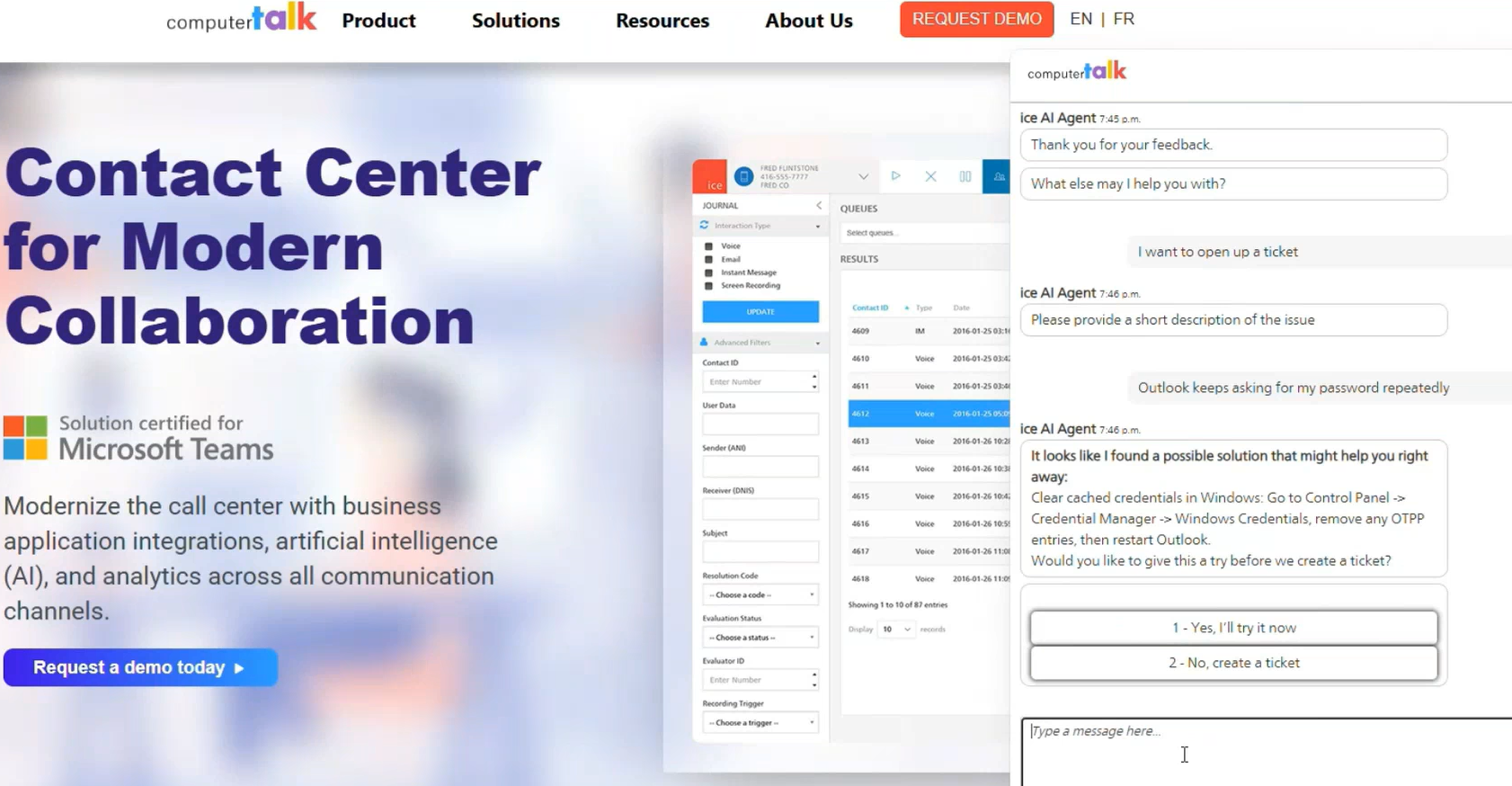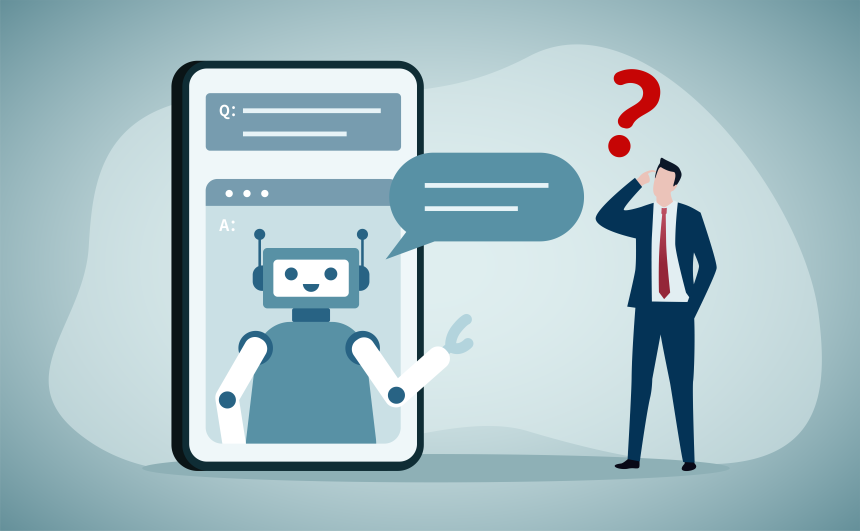Meeting Gen Z's Customer Service Expectations: What Businesses Need to Know
by Nicole Robinson | Published On July 18, 2024 | Last Updated February 7, 2025

Each new generation of consumers introduces new challenges for every business team.
Gen Z is no exception. The new era of digital natives, defined by their long-standing relationship with innovative technology, now makes up 40% of the global consumer base.
Not only are these consumers more connected, diverse, and inclusive than their peers, but they also have higher expectations when it comes to customer service. They’ve grown up in a world of instant gratification and high-level personalization, and they expect companies to invest in increasingly innovative ways to address their needs.
In this article, we’ll introduce you to everything you need to know about Gen Z customer expectations, how they’re influencing contact center teams, and how you can adapt in the months ahead.
Understanding Gen Z: The True Tech Pioneers
Gen Z (Generation Z) is the name given to people born between the late 1990s and the early 2000s. The exact “date range” for defining Gen Z consumers is a hotly debated topic but Pew Research defines 1996 as the last birth year for millennials. This means members of Gen Z will probably have been born between 1997 and 2015.
Although Millennials (the generation before Gen Z) are often described as digital natives, Gen Z are the first group of people to never experience life without a smartphone. They’ve been exposed to mobile networks, social media, and digital technology from the earliest days of their youth.
As a result, the customer expectations of Gen Z are unique. They’re not used to waiting in call queues to speak to a customer service agent, as they’ve always had access to instant communication methods like chat and text.
Gen Z are also often described as the “woke” generation. They prioritize concepts like diversity, equity, and inclusion, and believe we all have a responsibility to address common environmental and social issues as a global community. They want companies that are authentic, transparent, honest, and genuine, driving an increased need for empathy and compassion in customer service.
Gen Z’s Customer Service Expectations: The Top Factors
Customer expectations are constantly evolving among every generation, including Gen Z. However, research into this consumer group does reveal a few key factors that influence the expectations of Gen Z buyers today. These include:
Demand for Speed and Efficiency
Gen Z has grown up with technology that offers instant gratification, and this has significantly influenced their expectations when it comes to customer service. They expect information to be easily accessible and support to be simple, streamlined, and fast.
As mentioned above, Gen Z has always had access to fast and efficient communication methods, from social media to chat and text. They don’t generally spend much time in call queues and expect efficient experiences via digital channels instead.
57% of Gen Z customers say they expect to get a response from a customer service group within 24 hours or less. Around 27% expect responses within just a couple of hours. This is a stark contrast to previous generations, who often waited days for a response via channels like email.
A Need for Personalization
Gen Z consumers are proud of their individuality and diversity, and they expect every company to treat them like a unique human being. Again, they’ve grown up in a world where companies can easily personalize experiences, with access to huge volumes of data.
They expect companies to leverage technology to understand their needs and tailor their interactions with them accordingly. The good news is that Gen Z are willing to share more data with businesses in exchange for personalized service, including insights into their hobbies and interests.
Additionally, companies that can deliver higher levels of personalization are rewarded with greater loyalty. 72% of Gen Z respondents in one survey said they’re more likely to be loyal to a brand that personalizes its customer support experience.
Omnichannel Support
Demand for customer service across multiple channels is increasing among all generations, not just Gen Z. However, the second-youngest generation does expect access to a wider range of channels, including not just email, chat, and phone, but social media and in-app messaging.
90% of Gen Z consumers expect companies to have an active social media presence, and around 13% also use social media as their preferred form of contact. Approximately 17% of Gen Z customers say they still want to be able to speak on the phone with customer service teams, and around 57% choose email as their top contact method.
However, since Gen Z want fast and efficient services, this also suggests that multichannel contact center solutions won’t be enough. To deliver quick, consistent experiences, companies will need to embrace a true “omnichannel” approach and connect data between the channels they use.
The Self-Service Requirement
Like omnichannel support, self-service customer support is becoming a popular option for all generations. However, Gen Z is more likely than most companies to seek out self-service options, due to their confidence with technology and the internet.
A Gartner report found that 38% of Gen Z customers will actually give up on getting help with a customer service issue if they can’t resolve it with a self-service solution, like a chatbot or knowledgebase.
Gen Z consumers are happy using self-service solutions for everything, from booking appointments to purchasing products and setting up their own technology. They often find self-service solutions faster and more convenient than interacting with customer service agents.
How Gen Z is Transforming Customer Service
As Gen Z continues to take over the active consumer landscape, customer support leaders are being forced to rethink their approach to experience management. The Gen Z community is setting high standards for speed, cutting-edge technology, and personalization, prompting three major changes:
The Growing Adoption of Artificial Intelligence
Artificial Intelligence (AI) is quickly emerging as an essential resource for contact centers that want to boost efficiency, reduce costs, and meet Gen Z customer expectations. Gen Z have spent more time getting “comfortable” with bots than virtually any other generation in the consumer landscape, so they have no problem interacting with artificial intelligence.
Around 85% of Gen Z customers have used virtual and automated agents to address their customer service needs in the last couple of years. Additionally, studies show that Gen Z are one of the top groups driving the early adoption of generative AI tools.
This means they’re likely to expect their “bot” interactions to be more intuitive, creative, and personalized than they were with old-fashioned chatbots.
Additionally, since Gen Z value personalization, efficiency, and speed, they’re pushing companies to leverage AI for a range of other purposes. Companies are using sentiment and conversational analysis to learn more about Gen Z customers and their preferences, and they’re using AI to empower teams to complete tasks and resolve issues more efficiently.
Enhanced and Aligned Communication Channels
As mentioned above, Gen Z expect to be able to communicate with companies on a range of channels – particularly the digital channels they feel most comfortable with. Around a quarter of Gen Z consumers in one study said they began contacting companies via SMS during the pandemic.
They also want to be able to leverage fast and convenient interactions through live chat, social media, email, and phone. To adapt to these requirements, companies will need to ensure they’re implementing the right approach to omnichannel customer service.
Customer service leaders will need to embrace channels that give customers access to the immediate responses they want (like chat and chatbots), as well as giving consumers the freedom to elevate their conversation to any other channel of choice.
Companies will also need to ensure they’re leveraging different channels to engage their customers through outbound campaigns. For instance, 57% of Gen Z consumers prefer to receive support updates via email, while another 37% prefer updates through text.
An Increased Focus on Data-Driven Optimization
Gen Z, like many other consumer groups today, is particularly selective about the companies they show loyalty to. Around 88% of Gen Z consumers consider themselves loyal to five brands or fewer, meaning companies need to work harder to earn their commitment.
However, 59% of Gen Z consumers say they are willing to give companies a second chance after a bad experience. This highlights a growing need for organizations to invest in effective methods of gathering insightful feedback, so they can learn from their mistakes and adapt.
Companies that leverage automated survey tools to keep track of the voice of the customer, social listening solutions, and CRM platforms that allow them to monitor feedback and sentiment will be more likely to earn the loyalty of their Gen Z community.
The more data businesses can collect about every Gen Z consumer journey, the more they can adapt rapidly to their changing customer expectations and differentiate themselves from competition.
Strategies for Staying Ahead of Gen Z Customer Expectations
Based on all these insights, what do companies need to do to align with the evolving customer expectations of their Gen Z audience? Here are our top tips for success.
Invest in the Right Technology
Adapting to the expectations of a generation that has grown up surrounded by technology means investing in the right technology for your customer service team. Start by leveraging an omnichannel contact center solution that allows your team to deliver convenient and efficient customer service on every channel that appeals to your audience, while retaining context between platforms.
Invest in the latest innovations in the artificial intelligence landscape. Update your self-service technologies with generative AI bots that can creatively respond to common questions. Add AI functionality to your IVR system to streamline the customer experience and use AI agent assistants to support agents through each conversation.
Additionally, make sure you’re leveraging technology that helps you to keep track of and understand the Gen Z customer journey, from sentiment analysis tools to surveys and CRM platforms.
Train and Empower Staff
Gen Z expects communicating with contact center staff to be as intuitive and convenient as talking to a friend. To give them this experience, you need more than just the right communication channels. You need agents that know how to communicate effectively with Gen Z consumers.
Implement comprehensive employee training strategies, focusing on both soft skills and hard skills. From a soft skills perspective, concentrate on nurturing emotional intelligence, empathy, and compassion, by upgrading communication and active listening skills.
When it comes to technical skills, look for ways to empower employees to use tools that will make them more productive and efficient when interacting with consumers, such as AI bots and analytical platforms. Monitor conversations in real time and historically, and adapt your training strategies based on the insights you gather.
Create a Feedback Loop to Enhance Personalization
Finally, make sure you can deliver the exceptional personalization your Gen Z consumers are looking for. Investing in CRM technology that integrates with your contact center, leveraging sentiment analysis tools, and performing regular conversation analysis will help.
However, it’s also important to look beyond the metrics and gather genuine, comprehensive feedback from your Gen Z community. Regularly send surveys to your community for insights into what they like and dislike about your approach to customer service.
Share that feedback with your employees and ask them for insights based on what they’ve learned through conversations with the younger community. Additionally, make sure team members are actively taking notes (with AI-powered tools), so you can build more comprehensive customer profiles for better levels of personalization.
Are You Ready for Gen Z in the Contact Center?
Ultimately, Gen Z is now a major force in the active consumer community, and companies need to make sure they can adapt to their evolving expectations. If you don’t have the right strategy in place for delivering efficiency, speed, omnichannel service, and personalization, you risk losing a huge portion of your target market to the competition.
Check out our guide here for insights into how you can use omnichannel strategies to accelerate issue resolution in the contact center.
Fortunately, the right technology can help. With an omnichannel contact center like ComputerTalk’s ice contact center, AI-powered tools for self-service, and a robust approach to collecting customer data, you can prepare for a new era of customer expectations.
Reach out to our team to find out how we can provide the technology you need to delight, engage, and retain your Gen Z customers.
More from our blog
 My journey first started at ComputerTalk back in 2019, right out of university, on the Application Development team.
My journey first started at ComputerTalk back in 2019, right out of university, on the Application Development team.
 Uncover how chat and bot capabilities in ice Contact Center simplify workflows and create more efficient, personalized customer experiences.
Uncover how chat and bot capabilities in ice Contact Center simplify workflows and create more efficient, personalized customer experiences.
 Virtual agents are quickly becoming a crucial part of the modern contact center, extending the functionality of the traditional chatbot to transform self-service.
Virtual agents are quickly becoming a crucial part of the modern contact center, extending the functionality of the traditional chatbot to transform self-service.


